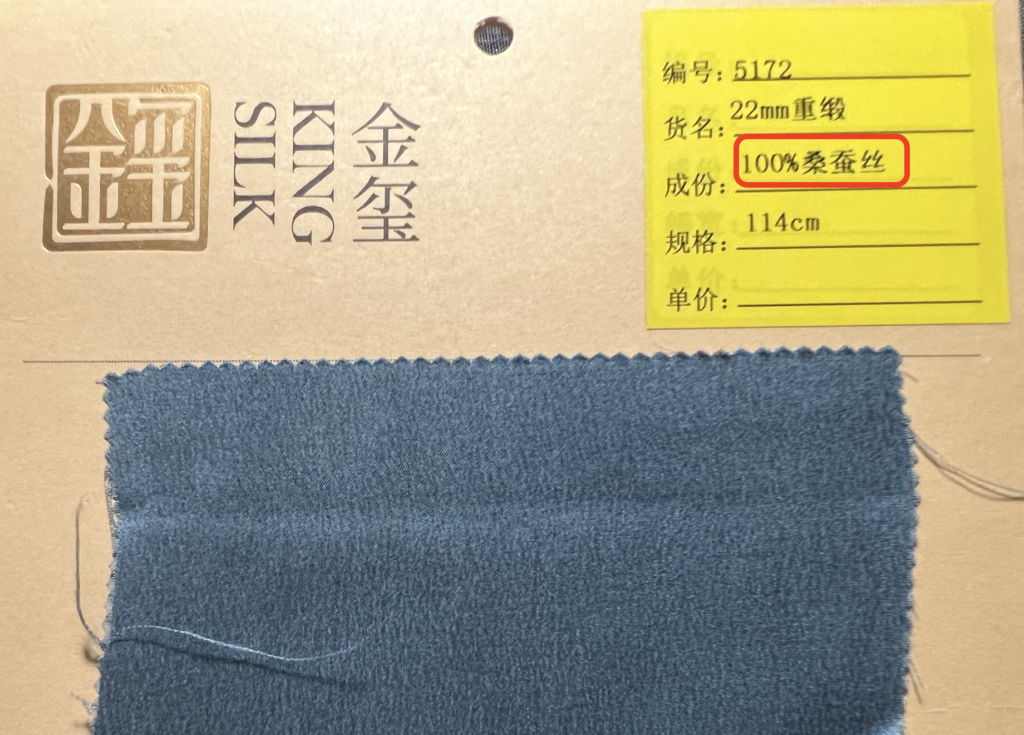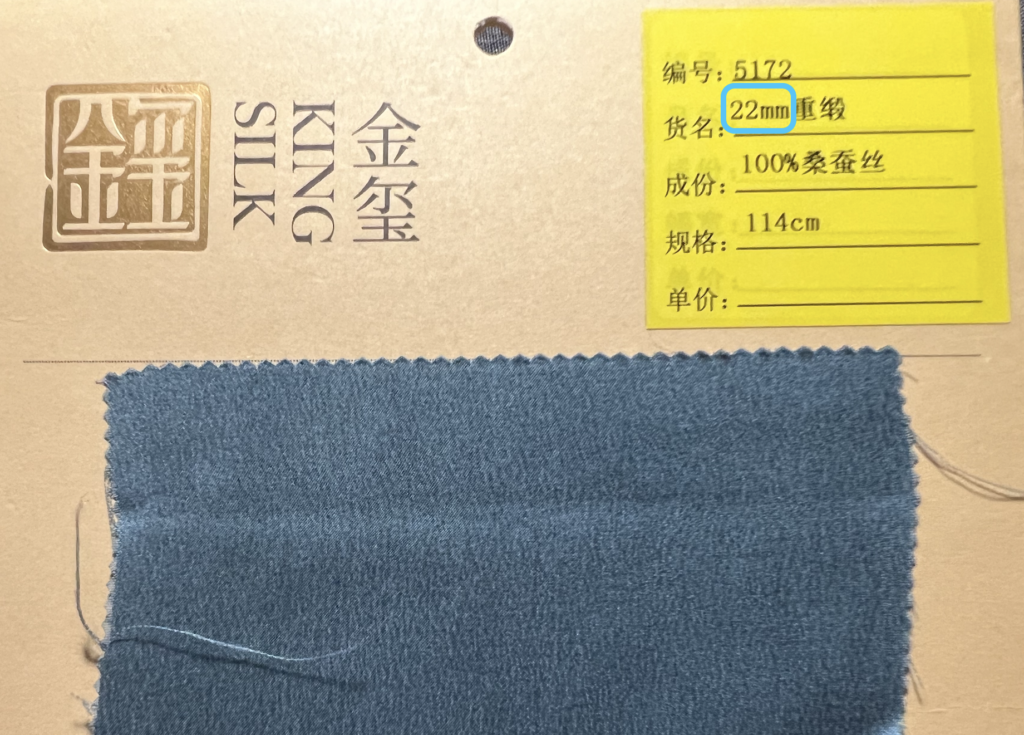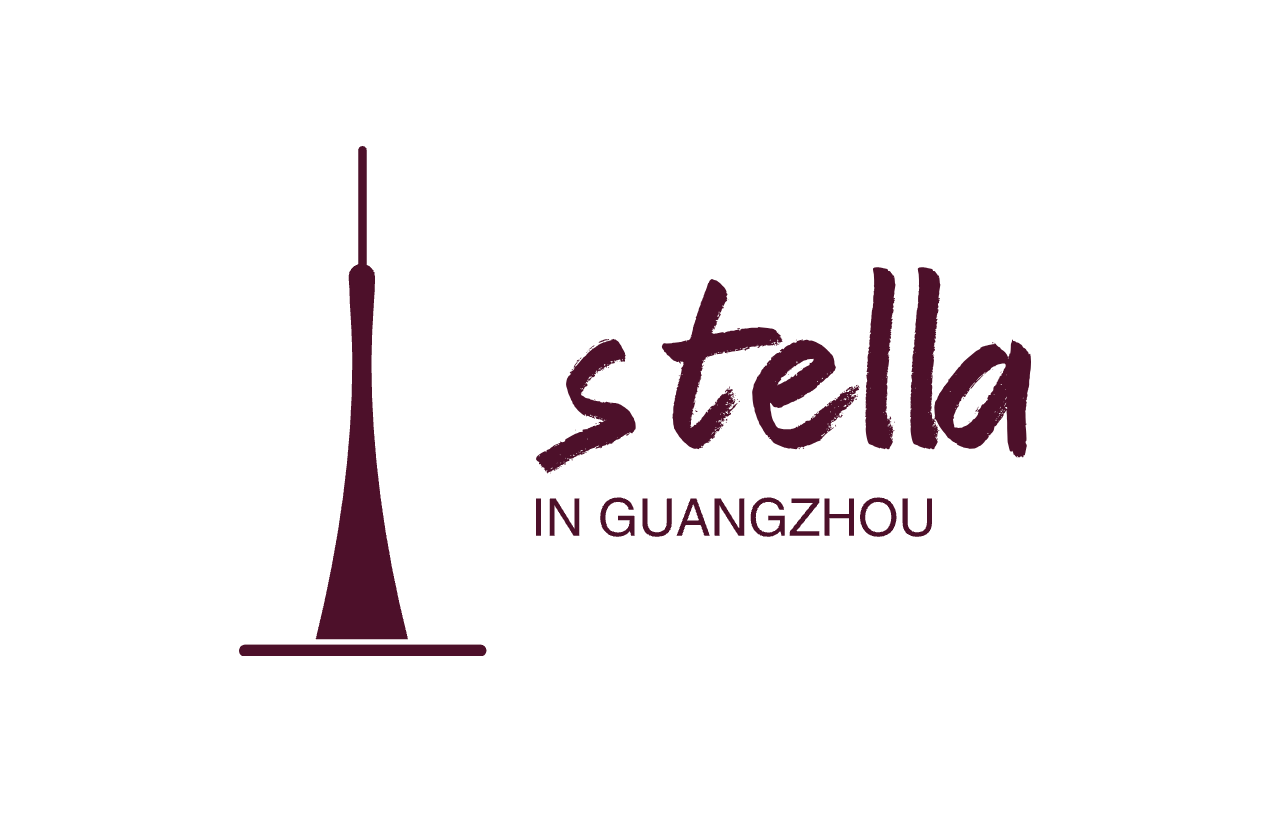In my line of work, I rarely had to deal with silk fabrics—until recently, when a client requested help sourcing silk. So, I had a crash course in silk basics and explored the Guangzhou International Textile & Fabric market(ONEFABA, official name/logo) thoroughly (let’s just say I turned the market inside out!). Based on my recent deep dive into the silk world, I’ve put together a summary of what I’ve learned. If I missed anything or if you have more insights, feel free to share!
The Composition of Silk
Silk is derived from the cocoons of silkworms, primarily the mulberry silkworm. The most commonly used silk is from domesticated mulberry silkworms, often called “桑蚕丝” (Mulberry Silk). However, there’s also a type called “柞蚕丝” (Tussah Silk), which is harvested from wild silkworms. Let’s look at the key differences:
- Mulberry Silk (桑蚕丝): This silk is smooth, fine, and can be spun into long, continuous fibers, making it ideal for high-end textiles.
- Tussah Silk (柞蚕丝): This is coarser, more textured, and has shorter fibers, resulting in a more rustic and natural feel.

In China, labels that state 100% Mulberry Silk or 100% Tussah Silk meet legal standards. However, if you see a label that simply says 100% Silk or 100% 蚕丝, it may not meet these regulations since the specific silk type isn’t disclosed.
Characteristics of Silk Fabrics
Silk is renowned for its unique set of features, making it a popular choice for luxury garments and delicate textiles:
- Luster: Silk has a natural sheen that gives it an elegant, high-end look.
- Softness: The fabric is incredibly soft to the touch, providing a smooth and comfortable feel.
- Breathability: Silk is highly breathable and absorbs moisture, keeping the skin cool and dry, especially in warm climates.
- Hypoallergenic: Being a natural fiber, silk is less likely to cause allergic reactions, making it ideal for people with sensitive skin.
However, silk also has some drawbacks:
- Wrinkling: Silk tends to wrinkle easily, which requires careful handling and regular ironing.
- Delicate Care: Silk requires special care, such as hand washing or dry cleaning, to maintain its quality and appearance.
- Price: Silk can be pricey due to its complex production process.
- Durability: Silk can wear out over time, especially with exposure to sunlight or moisture.
Blended Silk Fabrics for Enhanced Durability
While pure silk is luxurious, it can sometimes be blended with other fibers to improve its durability and practicality. Some common silk blends include:
- Silk + Spandex: Adds elasticity and prevents the fabric from snagging or tearing.
- Silk + Cotton: Creates a more structured fabric that is less prone to snags while maintaining a soft feel.
- Silk + Nylon: Enhances wrinkle resistance and reduces shrinkage, making the fabric more durable for everyday use.
Understanding Momme (mm)
When talking about silk, you’ll often come across the term Momme, abbreviated as mm. Momme measures the weight and thickness of silk. A higher momme count means thicker and heavier fabric. This measurement is crucial in determining the quality and durability of silk. Generally, the higher the momme, the more luxurious and long-lasting the fabric.
Normally, the momme is showed on the fabric swatch

Here’s a quick guide:
- 8-12 Momme: Lightweight silk, commonly used for scarves or summer garments.
- 16-19 Momme: Medium weight, ideal for dresses, blouses, and high-quality shirts.
- 22+ Momme: Heavyweight silk, often used for luxurious bedding, outerwear, and more durable products.
Common Types of Silk Fabrics
There are various types of silk fabrics. Below are some of the more common ones:
Crepe Back Satin/Silk Charmeuse (素绉缎): Known for its high sheen on the front (satin) side and matte texture on the back (crepe), making it ideal for evening wear and formal dresses.
Silk Crepe de Chine (真丝双绉): A matte finish with a crinkled texture, often used for printed silk fabrics, with a finish that resembles the back of Silk Charmeuse. It is a great choice for lightweight blouses or flowing skirts.
Heavy Crepe (重绉): Made with tightly twisted yarns, this silk resists wrinkles and provides a rich texture. It is ideal for structured dresses or skirts.
Silk Double Face Duchess Satin (双面缎): Durable and crisp with a high sheen, commonly used for suiting or structured garments.
Silk Georgette (乔其纱): A lightweight, slightly sheer fabric with a crinkled texture, used for flowing garments.
Silk-Wool Blend (丝羊毛): Combines the softness of silk with the warmth of wool, providing a luxurious matte finish ideal for custom-made pieces.
Additionally, certain finishing techniques enhance silk’s beauty, such as:
- Cutwork: Adds texture and dimension to silk using techniques like metallic threading and embroidery.
- Embroidery: Embellishes silk fabrics with intricate designs, often seen in formal wear.
- Burnout: A technique where portions of the silk fabric are chemically treated to create a pattern, leaving a mix of sheer and opaque areas.
A unique silk fabric worth mentioning is Xiangyun Silk (香云纱), a rare and traditional Chinese silk, known for its glossy finish and environmental-friendly production process. It’s often used in high-end fashion.
How to Identify Real Silk
It’s important to verify the authenticity of silk, as many synthetic fabrics mimic its appearance. Here are a few tests to identify real silk:
- Burn Test: Take a small thread of the fabric and burn it. Real silk smells like burning hair and leaves a black, powdery ash. It will also stop burning immediately after being removed from the flame.
- Touch and Feel: Real silk feels cool to the touch and has a soft, smooth texture with a slight sandpaper-like feel when rubbed. Synthetic silk is often too slippery or glossy.
- Gloss Test: Genuine silk has a subtle, natural luster that changes in different lighting, while fake silk usually has a shiny, uniform glow.
- Bleach Test: Genuine silk will dissolve in chlorine bleach, while synthetic fibers will remain intact.
Finding Silk Fabrics in Guangzhou Fabric Market
Recently, I spent some time exploring the Guangzhou International Textile & Fabric market(ONEFABA) in search of silk. After visiting every shop that sells silk, here are my findings:
- Black and white silk fabrics are usually in stock, but if you need other colors, they typically have a minimum order quantity of around 200-500 meters. For smaller quantities, additional dyeing fees (roughly 300-500 RMB) may apply.
- Generally, higher momme silk fabrics are not kept in stock due to their high cost.
- Fabric shops offer fabric swatches cards for free, but for high-momme silks, it’s rare to find fabric swatches. You’ll need to look at the swatches/samples available at the shop.
- I’ve collected contact details for all the silk vendors in the market. If you’re interested, feel free to reach out if you need them!
That’s a wrap on my recent exploration of silk fabrics. Hopefully, this post gives you a better understanding of silk. I’d love to hear about your own experiences with silk, or feel free to ask any questions in the comments below!
If you have any questions or need help sourcing silk or other fabrics, I’m more than happy to assist you.
You May Also Enjoy

How I Helped a Client Source and Order Fabric in Just 5 Days: A Behind-the-Scenes Look at Sourcing in China
A recent fabric sourcing project I handled: in just a few days, I helped a client source fabric from Zhongda Market, confirm orders, and prepare the shipment, all without them needing to be in China.



6 Responses
Hi, we’re looking for pure silks, chiffon’s and silk fabrics and manufacturing units, for evening wear and gowns
Hello, I’ve replied you via email. Please check. Thank you.
Hello! I am looking for silk fabrics to make gowns in guangzhou. Could you please advise
Hello Jigmet, I’ve replied to you on email. Please check. Thank you.
Hi Stella, I’m looking to source silks from Guangzhou, i will be there next week. I am looking for printed silks, chiffons, heavy silks. Thank you
Hi Cristina,
Thank you for your comment. I’ve just sent you an email with more details. Please feel free to reach out if you’d like any support while sourcing fabrics in Guangzhou.